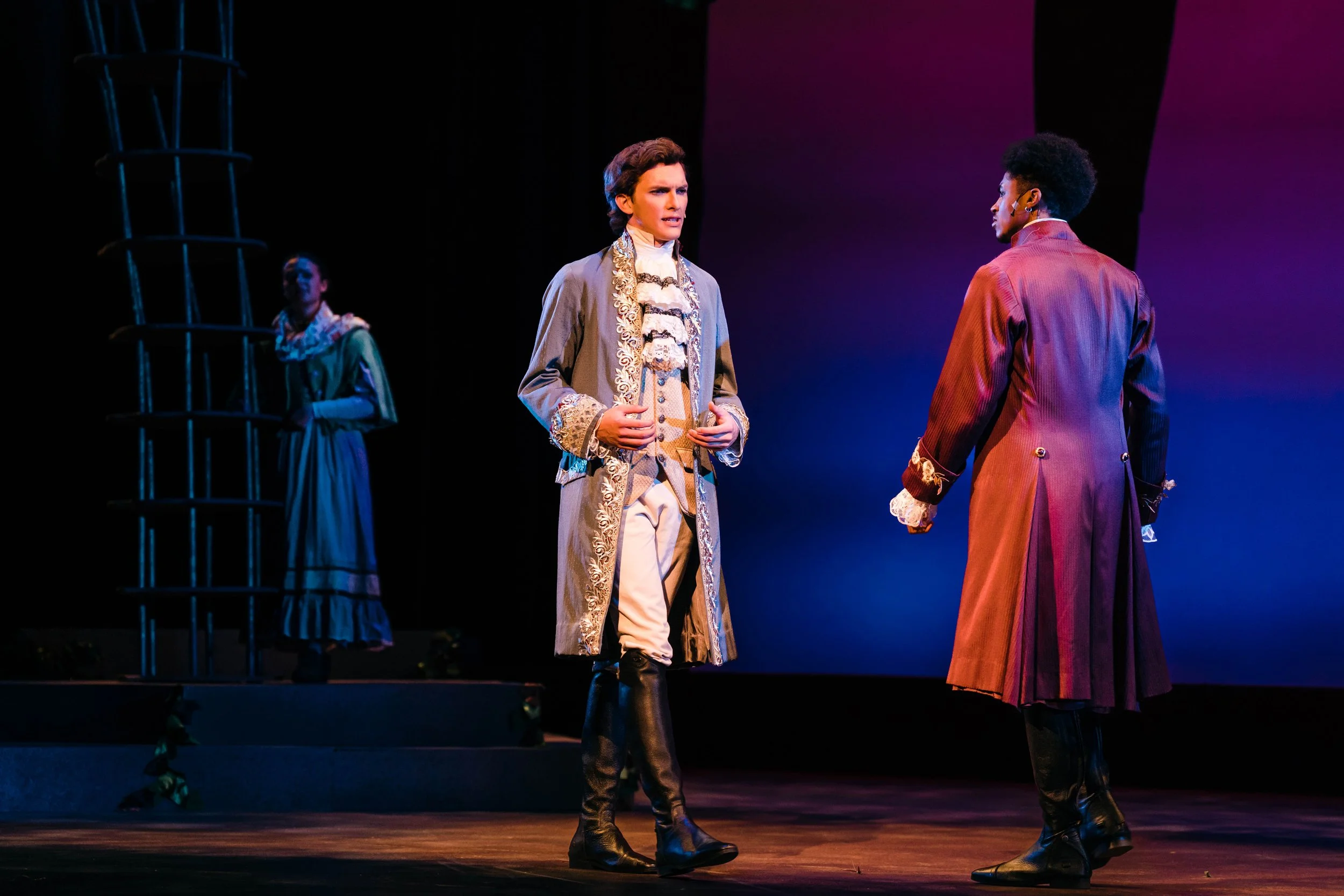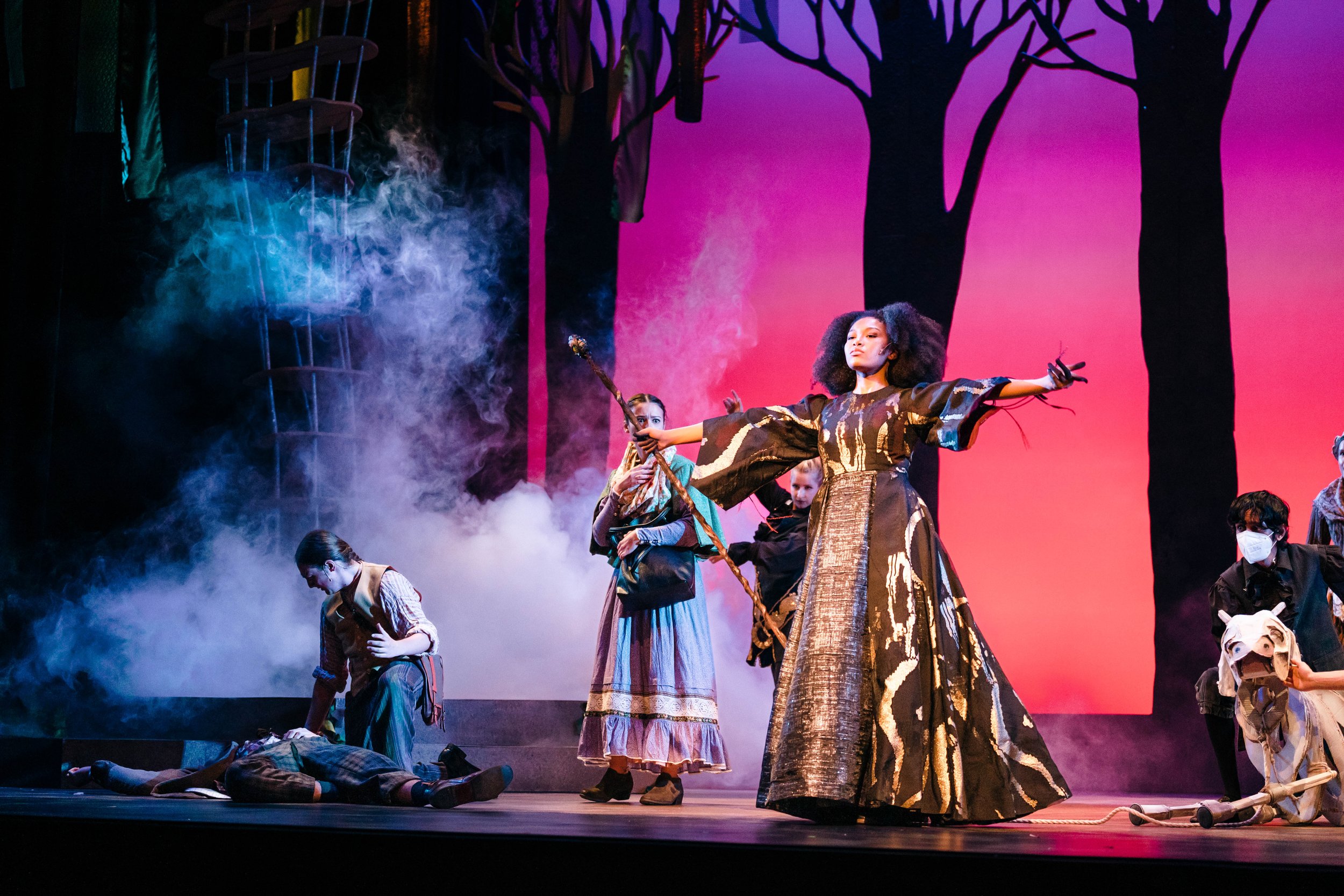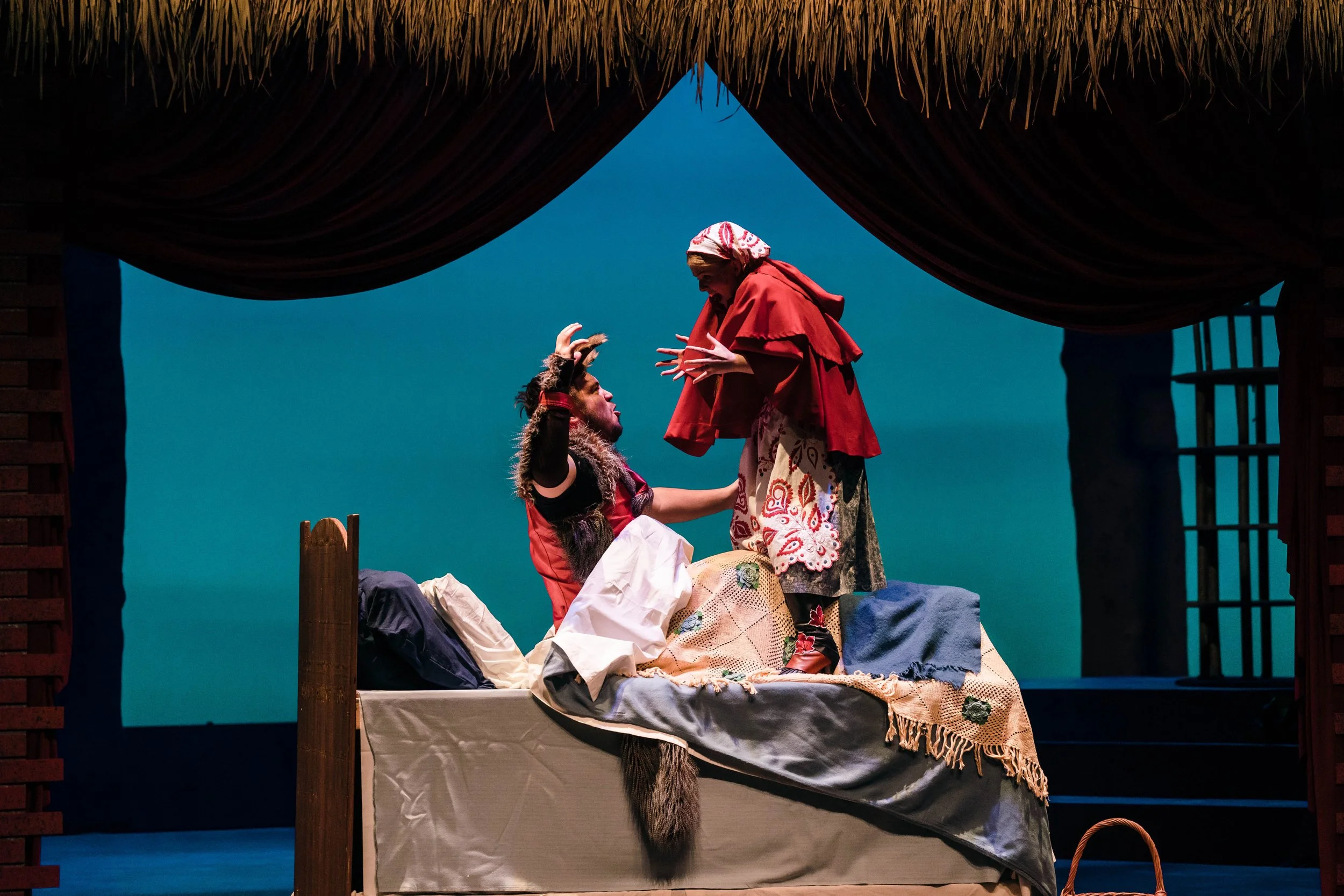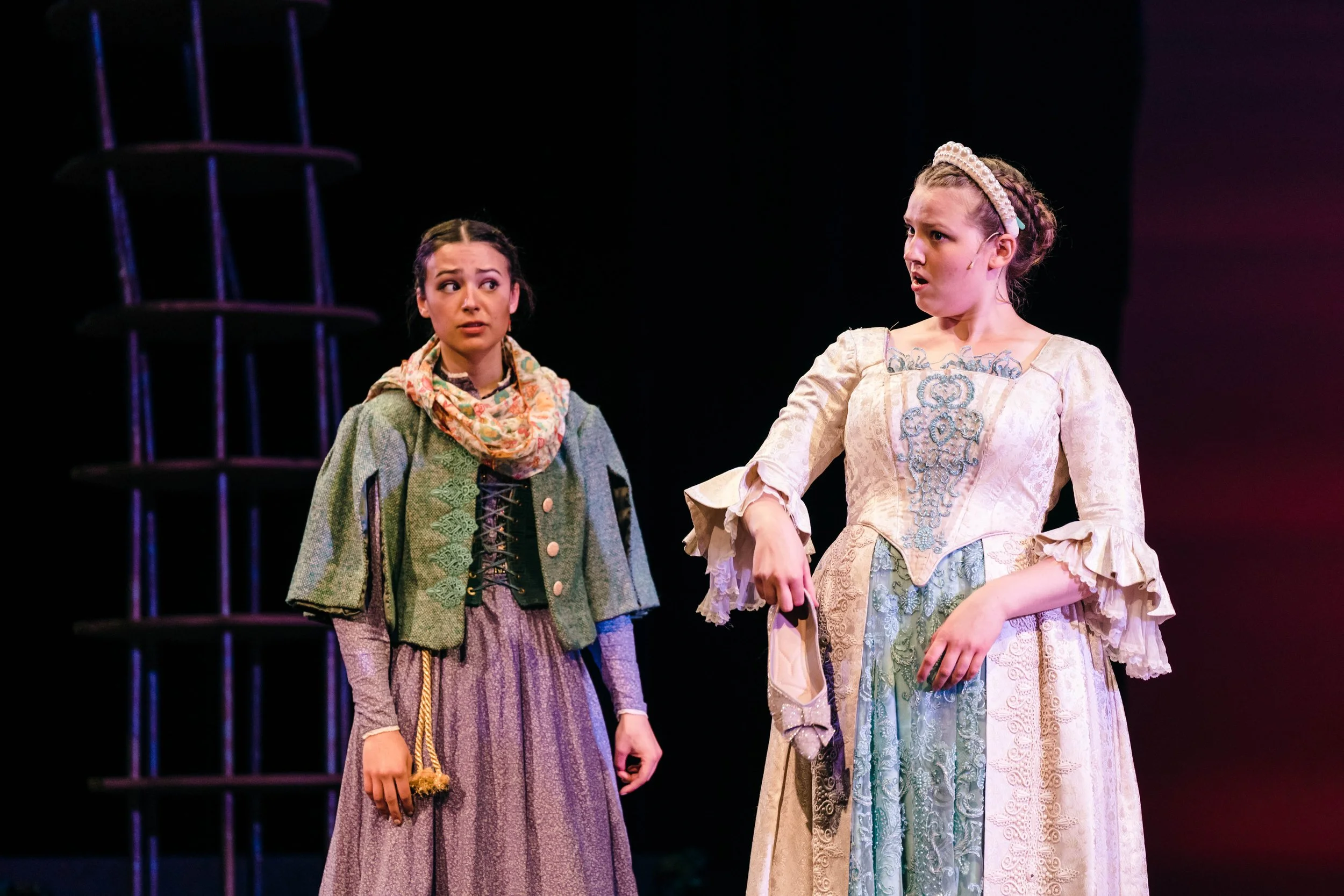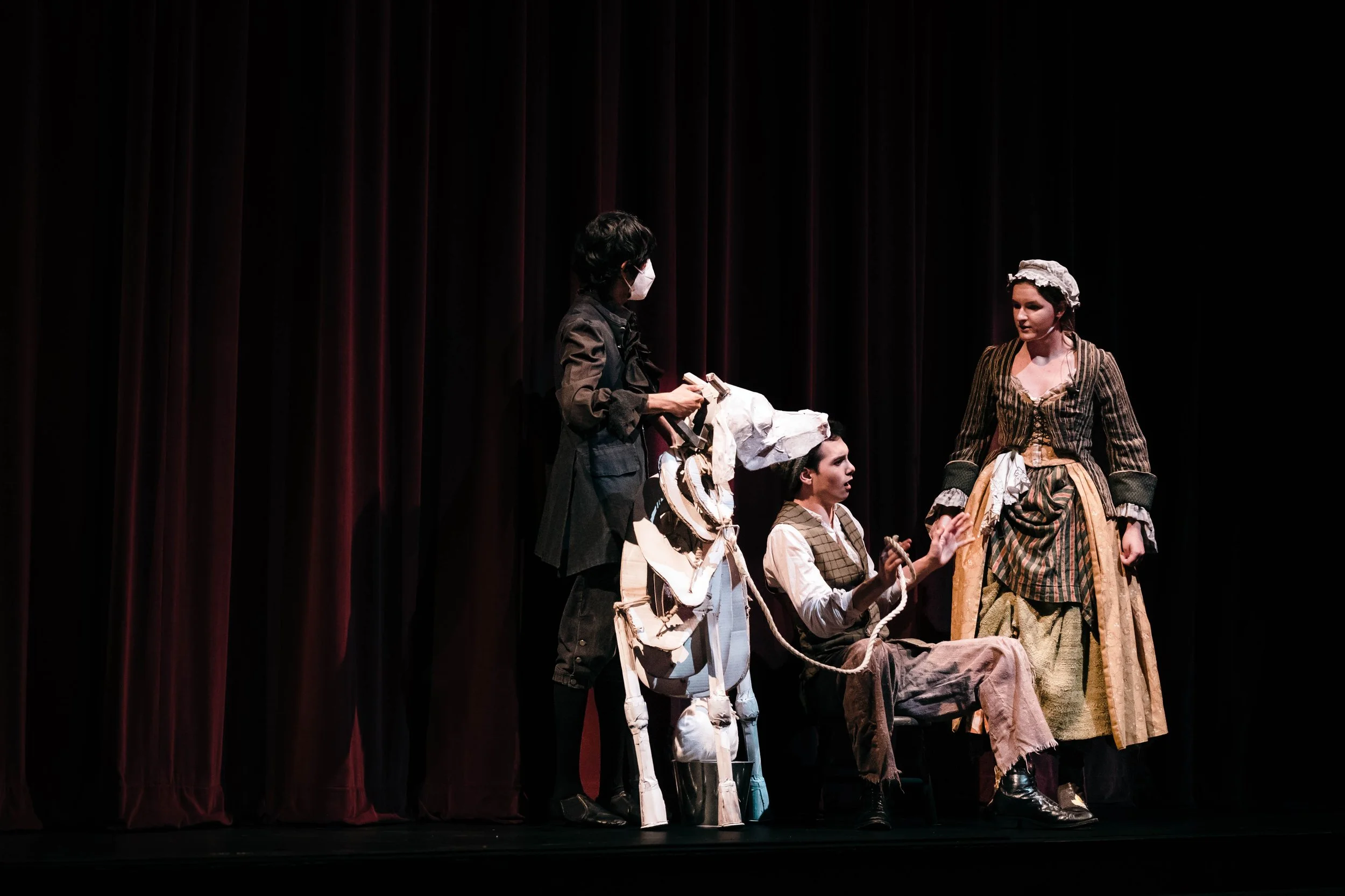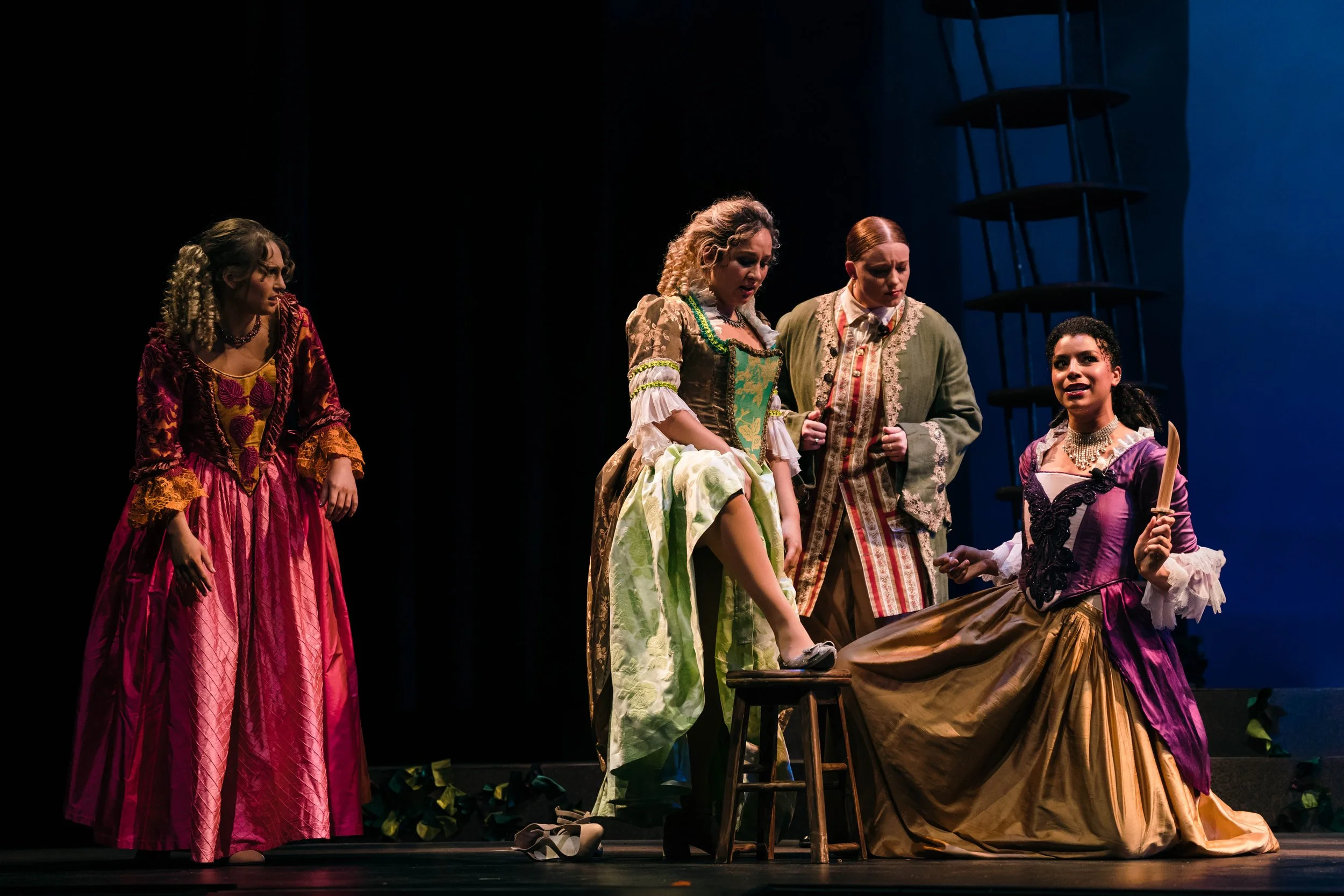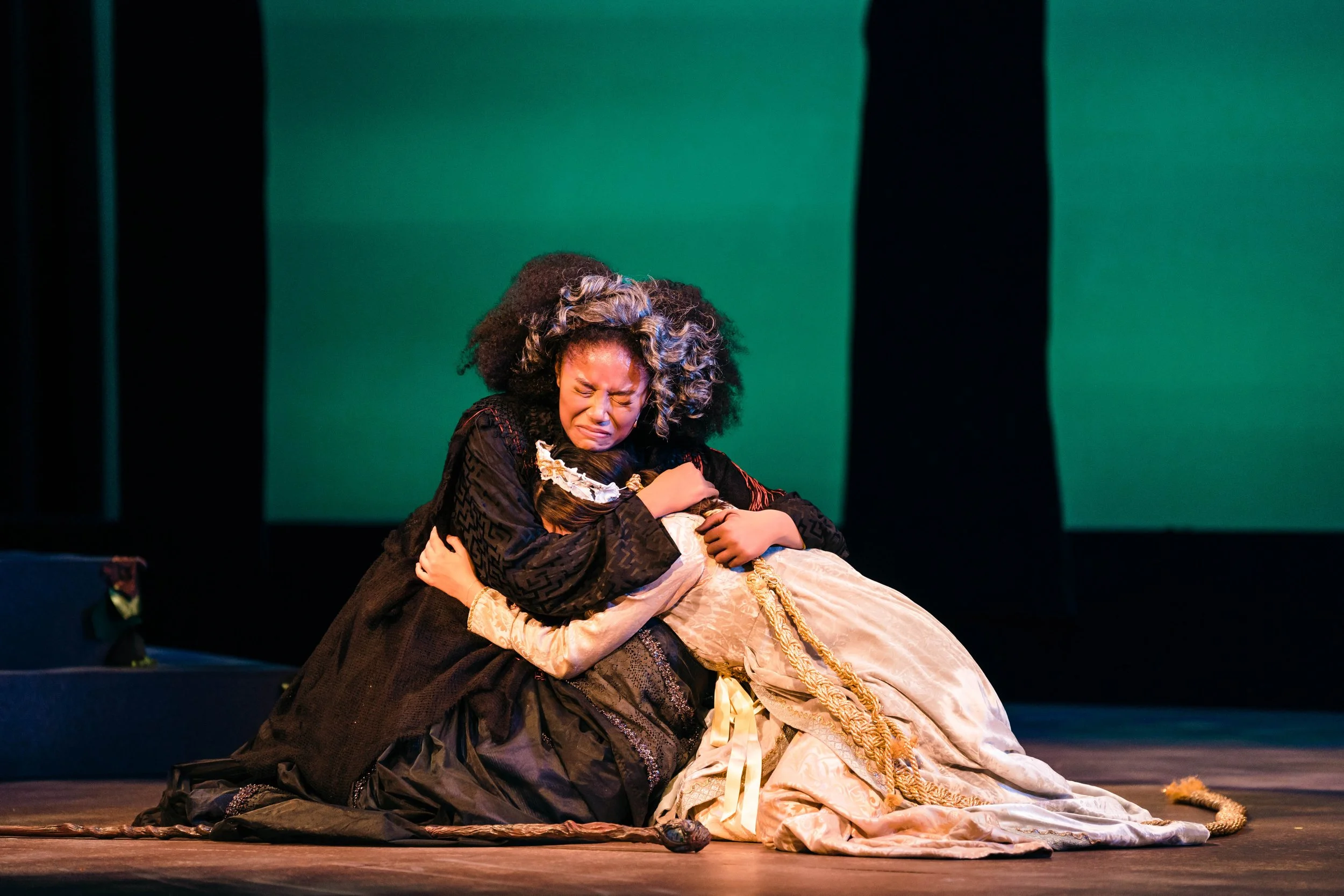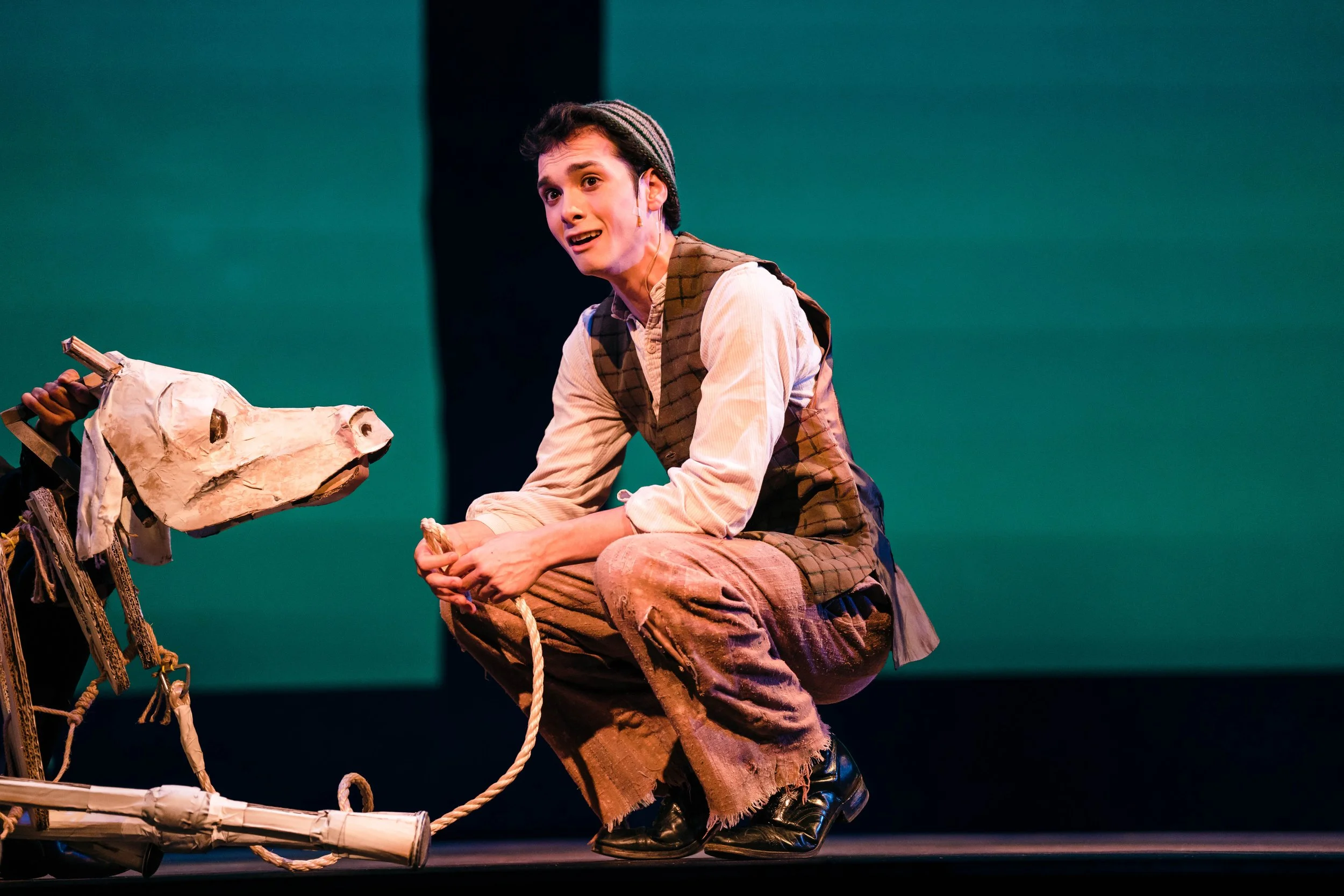A Study in Flawed Characters
Into the Woods transitions from fairytale to thriller
What were once random faces passing by as you wait for your burrito bowl in Benson transformed into witches, princesses, bakers and adventurers onstage in Mayer Theater. The theater department delivered a stunning adaptation of Into the Woods as the student cast brought their spellbinding talent to the familiar favorite.
This musical is unique in how it aims to turn tropes on their head. Into the Woods presents an unconventional take on the Disney-inspired fairy tales and fables we remember from childhood. Throughout the first act, characters are pushed from the haven of their homes into the woods in pursuit of whatever it is they most desire.
The first act moves something like a traditional fairy tale. But at intermission, the loudspeakers boom that there is, in fact, a second act, despite the fact that all loose ends seem to be tied. After the utopian conclusion of the first segment, the story takes a darker turn.
However, some of the most cynical facets of the play were scrubbed out. The Santa Clara production omitted some scenes that take place in the first half of the original musical written by James Lapine.
Some of the students featured in the show emphasized that without morally explicit storylines, the plot’s building tension may be lost on the audience, making the show as a whole less coherent. When it comes to school-sanctioned performances, actors often must resign to excluding any unseemly scenes or ideas.
Some students who performed in and viewed the play could agree on the character flaws that remained in the plain–sophomore Langston Wade goes so far as to deem his lead role, the Prince, “a spoiled and misogynistic asshole.”
While this prejudice is a keystone piece of Into the Woods’ plot in past productions (the Broadway musical won a Tony with its critical and cynical eye), some students felt the school erred in its selection of this year's musical. This production expunged some critical aspects that the school deemed inappropriate while leaving others (like misogyny) that may be viewed as equally inappropriate to perpetuate on stage.
Characters are flawed beyond their intended moral complexities–almost all of the women featured in the play are weak-willed and in need of male aid against the turbulence of the woods. And, by the end of the play, most of them were dead.
Into the Woods is pervaded with morally bankrupt characters, and the plot is driven by theft, deceit and rape. Wade reflected on the complexity of the would-be fairytale.
“All of the characters are amoral or lacking a moral compass,” he noted.
In the Witch’s soliloquy, Last Midnight, sophomore Kennedy Dawson belts: “You’re not good/ You’re not bad/ You’re just nice/ I’m not good/ I’m not bad/ I’m just right,” exposing each characters’ moral haziness. In facing any fairy tale, we feel inclined, if not obligated, to quickly categorize characters into two categories: hero or villain. But Into the Woods transcends this model. All characters are motivated to action by their own proclivity to prioritize themselves.
Good and evil are blurred, the play later decides, as its final song expresses that each character has the agency to decide what's right and good. But the characters still must face the trek through the woods to come to this conclusion, and as almost no character is one-dimensional, this makes for a much more entertaining watch.
But, unfortunately, the issues with representation and questionable content persisted backstage, as both Wade and Dawson took issue with aspects of the hair and makeup department. Both students are Black and had issues with hairdressers who did not understand how to style their hair. Dawson recalled being unhappy with wardrobe’s choice for the witch’s wig as it didn’t match her natural hair texture. Wade agreed with this sentiment.
“Makeup and hair is not catered to Black people,” he shared, but expressed hope that the theater department would accommodate them in the future.
Despite the darkness of the woods, the efforts of sound teams, the pit orchestra, designers and actors spotlighted a wonderfully complex tale.



